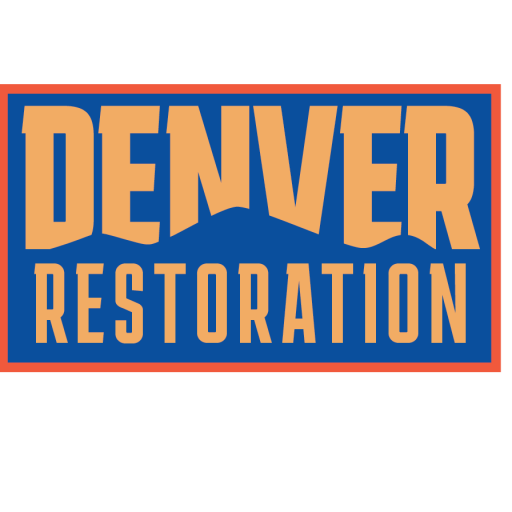Mindful Maintenance: The Key to Effective Moisture Control
Controlling humidity and moisture levels in your home or building is an essential yet often overlooked component of property maintenance. As a building owner, it’s crucial to devise a well-thought-out plan to tackle excess moisture, as it can lead to severe structural damage over time, and even worse, lead to the growth of harmful mold.
Understanding The Connection: Moisture and Mold
Mold thrives in humid and damp environments where moisture control is not properly maintained. Once it takes root, it can quickly propagate, leading to a series of health and safety concerns, in addition to structural damage to the building.
The EPA explains how tiny mold spores are always present in the air, and when they land on damp areas indoors, mold begins to grow. Once it forms, eradicating it can be a challenging task requiring expert intervention.
Damage Assessment and Estimation
If you are facing a moisture problem, the first step in the solution is damage assessment and estimation. Identifying the extent of damage and calculating repair costs is critical to devise a cost-effective strategy to prevent mold and ensure lasting building care.
Implementing Techniques and Equipment for Moisture Control
Adequate ventilation, dehumidification, and the usage of moisture-absorbent materials are few methods you can employ to maintain optimal moisture control in your building.
Denver Restoration provides a detailed guide on handling situations like sewage backups that can lead to increased dampness and moisture.
Environmental and Health Safety
Ensuring optimal moisture control isn’t just about maintaining your building’s structural integrity. It’s also crucial to consider that high levels of humidity can lead to unfavorable conditions for both the environment and the health of the building’s occupants.
Mold resulting from insufficient moisture control can lead to respiratory issues, allergy flare-ups, and other health issues. It’s crucial to be proactive and implement strategies to prevent mold from ever forming.
Insurance and Legal Compliance
As a building owner or manager, you have to comply with specific legal standards related to building safety and quality. Insurance companies also often need property owners to maintain their buildings adequately to prevent damages resulting from negligence, such as unchecked moisture leading to mold growth.
Customer Communication and Crisis Management
Transparent and regular communication with your tenants about your efforts towards moisture control can alleviate their concerns about mold growth. Providing education on individual moisture reduction practices can also be a part of this communication strategy.
Preventing Mold with Moisture Control: Your Next Steps
By maintaining a focus on moisture control, you become equipped to provide a safe, healthy environment in your building. Take the first step by understanding how moisture control can prevent mold growth.
Incorporating these tips into your regular routine will not only keep your building in good shape but will also provide peace of mind for you and your tenants. Remember, prevention is always better than cure, especially when it comes to moisture control and mold prevention.
Moving forward, ensure that moisture control takes a coveted spot in your building care plan. Time invested in moisture control is a significant step towards maintaining a healthy, safe, and long-standing building ecosystem. The journey to maintaining a mold-free building starts with effective moisture control.
Remember, when you strive for mastering moisture control in your building, you are exhibiting competence and a commitment to quality building care.
A Step Beyond Moisture Control – The Importance of Restoration and Renovation
While it is very important to maintain moisture control in your building, an overlooked damp issue or a sudden water intrusion event can lead to a need for in-depth restoration work. Prolonged dampness can result in significant structural damage necessitating extensive renovation. It’s essential to understand that moisture control, although crucial, is just the first line of defense. In cases of severe water damage, a more comprehensive approach involving restoration and renovation becomes necessary.
Recognizing The Need for Restoration
Determining when your building might need restoration due to water damage is a crucial component of building care. Signs include persistently damp areas, discolored walls or floors, a sudden onslaught of pests, and a musty smell. If you notice these signals, it’s time to call in the professionals to investigate the extent of the damage and initiate restoration measures.
Estimation and Planning
Once the need for restoration is affirmed, it is vital to carry out a detailed estimation of the costs involved. A comprehensive plan for restoration and renovation is then drawn up, taking into account various factors like the extent of damage, the building’s structure, and available resources. This step is critical in ensuring the most cost-effective and efficient restoration process.
Rising Above the Challenge – Restoration Techniques and Equipment
Restoration involves a series of steps, each crucial in rehabilitating the building back to its pre-damaged state. This could involve water extraction, drying and dehumidification, mold remediation, sanitization, and finally, repair and renovation.
Modern restoration services employ a variety of advanced equipment to expedite the process, including moisture meters and detectors, water extractors, air movers, and dehumidifiers. By combining these tools with expert restoration techniques, a successful restoration can be achieved.
It’s important to note that the process of restoration should never be attempted without professional help. Trying to ‘DIY’ a restoration project can lead to further damage and increased costs. Denver Restoration offers a comprehensive guide on managing moisture control in your home effectively.
The Envelope of Safety – Environmental and Health Standards in Restoration
Restoration work is not merely about bringing back the aesthetic appeal of a building. It’s also about ensuring that all health and environmental standards are met during the process. According to OSHA guidelines, it is essential to augment restoration work with adequate safety measures.
Restoration activities, especially mold remediation, need close adherence to health and safety standards due to the potential health risks involved. Prolonged exposure to mold can cause respiratory problems, skin and eye irritation, and allergic reactions. Hence, the importance of undertaking restoration with expert help cannot be overstressed.
Insurance and Legal Compliance in Restoration
When it comes to a restoration project, one cannot ignore the importance of insurance and legal compliance. Most building owners’ insurance policies cover water damage restoration. However, policy terms can vary, and hence it’s crucial to understand the extent of coverage and the claim process.
Legally, certain standards must be met during the restoration process. Non-compliance can result in penalties and even litigation. Hence, hiring an experienced restoration service that complies with all legal requirements is paramount.
Customer Communication during Restoration
Transparent communication is key to maintaining customer trust during a restoration project. Keeping them updated about the progress, addressing their concerns, and explaining the steps being taken for restoration creates a sense of transparency and builds trust. It also makes the process smoother and more efficient.
Denver Restoration emphasizes the importance of good communication during restoration projects.
Restoration and Beyond: The Road to a Safe and Healthy Building
Restoration is not merely about repairing the damage caused by moisture. It is a comprehensive process aimed at reviving your building’s health and safety conditions. With the right moisture control measures and expert restoration services, it’s possible to overcome water damage and maintain a dry, safe, and welcoming environment in your building.
As you move forward in your building management endeavors, remember the importance of restoration. By addressing water damage promptly and undertaking timely restoration, you not only rescue your building from severe damage but also demonstrate a commitment to maintaining a safe and healthy environment for its occupants.
Remember, a proactive approach to building care can save you from costly repairs in the future. It starts with effective moisture control and extends to efficient restoration measures. By adopting these steps, you ensure the longevity and durability of your building, offering a safe and comfortable space for everyone.
To learn more about how to respond to emergency situations, read our guide on fast and safe emergency response.

